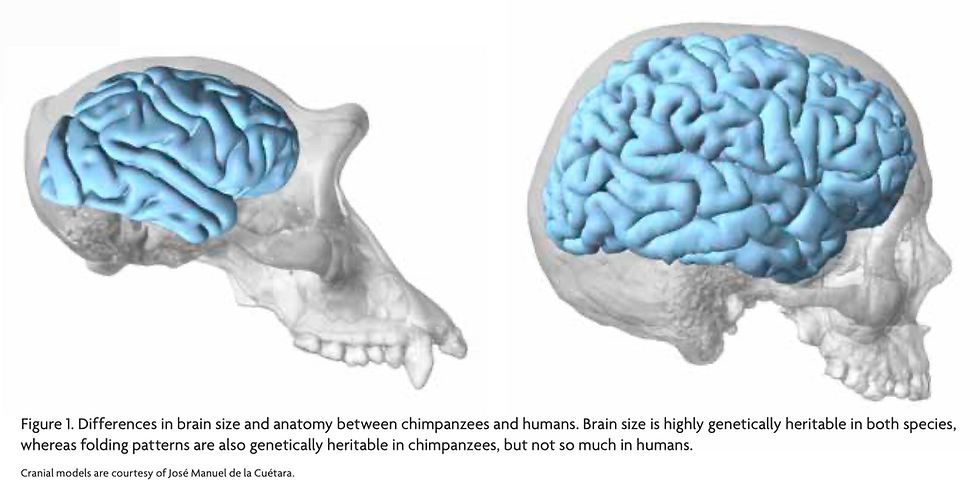Motivations Behind Altruistic Behaviors: Proximate and Ultimate Explanations
- Wu, Bozhi

- Apr 29, 2019
- 4 min read
Updated: Oct 31, 2019

From mothers nursing babies to people sacrificing their lives to rescue complete strangers, altruistic behaviors seem to be widely presented across human societies. Although largely taken for granted in our daily life, these behaviors have actually posed a serious puzzle for scientists, especially evolutionary scientists: what are the motivations and reasons behind those actions that benefit others at the “cost” of ourselves? This question actually involves two levels of analysis, including both the proximate and ultimate level of explanations (Tinbergen, 1963). Although these two levels of analysis are often discussed separately, they are essentially two aspects of the same process, as our responses to the proximate causes are also evolved through natural selection, due to the benefits from ultimate causes. In this essay, instead of diving deeply into the theoretical ultimate explanations of how human altruism could have evolved through reciprocity, kin selection, and cultural group selection, I would like to mainly focus on two potential motivations of altruistic behaviors in our daily life and briefly discuss their evolutionary logic. Furthermore, I will also hypothesize another motivation by myself and discuss the possible experiment that could be conducted to test this hypothesis.
Emotions have been generally suggested to be an important motivator in all kinds of human activities. One of the emotions that has been proposed to affect prosocial behaviors in recent years is called “elevation” (Schnall, Roper, & Fessler, 2010). Elevation, according to the researchers’ definition, describes a positive emotion experienced after witnessing others performing altruistic acts, which will usually result in an increased willingness to behave nicely and prosocially. Evidence from their experiments have supported the idea that the feeling of elevation can lead to altruistic behaviors, and this emotion is further examined to be distinct from mere positive mood. According to their hypothesis, others’ prosocial behaviors are cues of the overall level of prosociality of the group. And from an evolutionary point of view, behaving altruistically in a prosocial group comparing to a selfish group may result in higher fitness of the individual, as the reputation of the individual may increase and there will be a higher probability of the altruistic act being later reciprocated by other individuals. Combining the effect of this emotion with the social norm explanation (Cherry, 2018) and the cultural group selection theory (Henrich, 2004), it is not hard to see its evolutionary benefit for the individuals and its possibility of further perpetuating this positive feedback loop.
Another classical theory famously advocated by C. Daniel Batson is called the empathy-altruism hypothesis (Batson, Duncan, Ackerman, Buckley, & Birch, 1981), which greatly emphasizes the role of empathizing with the individuals in need in motivating altruism. Empirical evidence for this hypothesis is abundant (Eisenberg & Miller, 1987), and it is also validated by numerous neuroscience studies (see Singer & Lamm, 2009 for review). However, I am more curious about the evolutionary relationship between altruism and empathy, as I consider it plausible that our ability to empathize with others is itself a byproduct of evolution leading to increasing prosociality. In other words, prosociality and empathy may have co-evolved with each other. When there is higher empathy, there will be more prosocial behaviors; and when there is higher prosociality, people may empathize with each other more.
The feeling of guilt, although typically overlooked in the research of altruism and prosociality due to its negative valence, is actually another potential motivator of altruism that I have thought of. Sometimes, it is not the intrinsic value but the instrumental value that leads people to conduct certain behaviors. It is possible for an individual to behave altruistically because he feels guilty toward himself and wants to receive “redemption.” Evolutionarily, this might be related to the punishment system evolved in human societies. As the consequence of punishment might be severe for an individual’s fitness, acting prosocially could be a strategy adopted by the individual to reduce this harm. To test this hypothesis, we may adopt a “trust game” paradigm from behavioral economics research and design a controllable guilt-eliciting program in that game, measuring participants’ later altruistic moves after different levels of guilt being elicited. If this hypothesis is correct, then we may find a positive correlation between the degree of guilt and the amount of altruistic behaviors.
Personally, I mainly support the evolutionary explanation for altruism, as I deem other “explanations” including how reward centers in the brain are activated and how humans simply follow the social norms of reciprocity (Cherry, 2018) to be not explanations at all, at least not the explanations that can satisfy my curiosity of asking another layer of “why” questions. Therefore, to conclude, although various kinds of theories have been proposed to explain different kinds of altruistic behaviors, proximate explanations are not enough, and more comprehensive explanations are still needed to really incorporate every aspect of altruism that exists in our current society.
References
Batson, C. D., Duncan, B. D., Ackerman, P., Buckley, T., & Birch, K. (1981). Is empathic emotion a source of altruistic motivation? Journal of Personality and Social Psychology, 40(2), 290–302.
Cherry, K. (2018, November 12). Altruism: Why we risk our own well-being to help others. Retrieved April 19, 2019, from https://www.verywellmind.com/what-is-altruism-2794828
Eisenberg, N., & Miller, P. A. (1987). The relation of empathy to prosocial and related behaviors. Psychological Bulletin, 101(1), 91–119. https://doi.org/10.4135/9781412974615.n8
Henrich, J. (2004). Cultural group selection, coevolutionary processes and large-scale cooperation. Journal of Economic Behavior & Organization, 53(1), 3–35. https://doi.org/10.1016/S0167-2681(03)00094-5
Schnall, S., Roper, J., & Fessler, D. M. T. (2010). Elevation leads to altruistic behavior. Psychological Science, 21(3), 315–320. https://doi.org/10.1177/0956797609359882
Singer, T., & Lamm, C. (2009). The social neuroscience of empathy. Annals of the New York Academy of Sciences, 1156(1), 81–96. https://doi.org/10.1111/j.1749-6632.2009.04418.x
Tinbergen, N. (1963). On aims and methods of ethology. Zeitschrift Für Tierpsychologie,20(4), 410–433. https://doi.org/10.1111/j.1439-0310.1963.tb01161.x







Comments